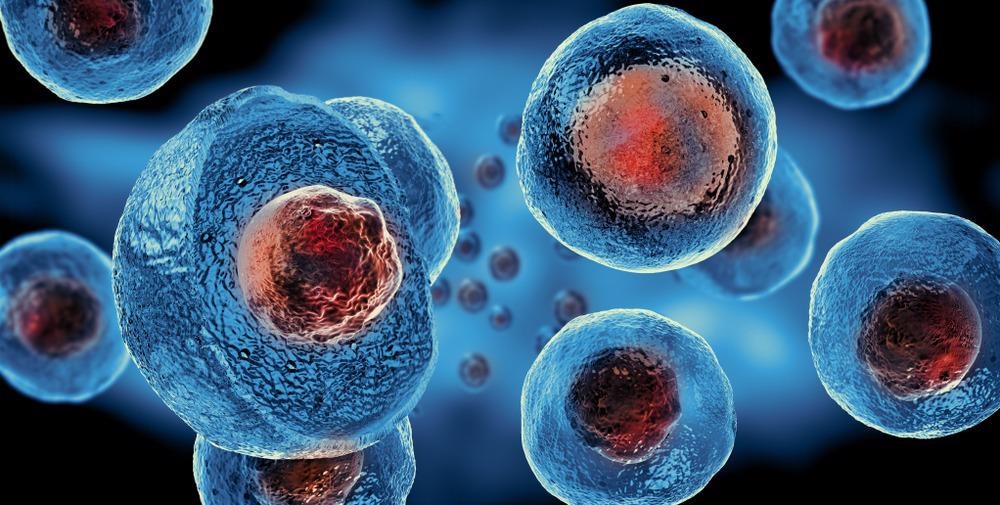A group of researchers has successfully fabricated a unique hydrogel-based graphene foam scaffold to effectively deliver adipose-derived stem cells (ADSCs) for the treatment of diabetic peripheral nerve injury (DPNI), according to a recent study published in the journal Nano Research.

Study:Graphene foam/hydrogel scaffolds for regeneration of peripheral nerve using ADSCs in a diabetic mouse model. Image Credit: Giovanni Cancemi/Shutterstock.com
What is Diabetic Peripheral Nerve Injury (DPNI)?
Peripheral nerve injuries (PNIs) are a frequently encountered consequence of limb damage, resulting in severe nerve and muscle impairments in victims and a significant drain on the economy. Despite recent advances in neurosurgical methods and medications, functional recovery remains inadequate in people afflicted with peripheral nerve injury. Diabetic patients suffer from a more advanced form of this disease called diabetic peripheral nerve injury (DPNI).
Diabetes mellitus (DM), a severe hyperglycaemic state, is a chronic illness that affects over 442 million people worldwide. Diabetes mellitus is strongly associated with vascular complications and nerve damage. Chronic hyperglycemia and microvascular problems can result in structural and functional damage to the nerves, reducing the peripheral nerve's restoration potential and making DPNI repair exceedingly difficult.
Limitations of Nerve Autografts for Restoring DPNIs
Replacing damaged nerve fibers with nerve autografts was largely believed to be the "gold standard" treatment strategy for peripheral nerve injury. However, this method's primary drawbacks include donor site infection and impaired functional restoration. Additionally, donors' nerves are not often accessible, necessitating a second surgical procedure.
Normally, diabetic patients have a considerable quantity of fat tissue. Adipose tissues not only store an excessive amount of cholesterol but also serve as endocrine organs, producing cells that increase insulin resistance. Numerous techniques for removing adipose tissue have been developed, but nearly all of them impose a substantial burden on the diabetic patient due to recurrent treatments.
Adipose Stem Cells based Therapies for DNPI Restoration
Due to their superior maturation capacity and peripheral immunity, stem cell-based treatments have evolved as a promising option for tissue repair during the past decade. Remarkably, adipose-derived stem cells (ADSCs) can be extracted from fatty tissue with relative ease. ADSCs generate a large number of signaling pathways and can develop into a variety of cell types that promote revascularization, nerve growth, and myelination. Given the abundance of ADSCs in diabetic patients and their enormous potential for homologous transplantation, it is critical to determine if ADSCs can facilitate the complicated repair process associated with DPNI.
However, ADSC survival after transplantation remains poor, and the mechanism for delivering ADSCs is currently being developed. Additionally, chronic hyperglycemia, a typical consequence of diabetes mellitus, impairs cell viability. As a result, a viable technique for delivering ADSCs is urgently required for DPNI repair.
Hydrogel-based Graphene Foam Scaffold for ADSCs Delivery
Composite nerve scaffolds are a useful method for the treatment of peripheral nerve damage because they provide mechanical protection for nerve regrowth. Mechanical strength is important for scaffolds to facilitate peripheral nerve regeneration and cell mobility.
Hydrogels have recently become a promising material for the medical industry owing to their natural extracellular environment and remarkable drug release properties. Due to the high interfacial network dispersion, double network (DN) hydrogels exhibit outstanding mechanical characteristics and are frequently employed in biomedical applications. Graphene, a two-dimensional nanomaterial with exceptional conductance, great mechanical characteristics, and high biostability and cytocompatibility, is employed in diagnostics, medical imaging, and bioengineering.
Due to hydrogels' and graphene's remarkable physiological abilities, the researchers in this work concentrated on the creation of a new hydrogel-based graphene foam framework for delivering ADSCs to treat peripheral nerve damage in diabetic patients.
The researchers employed the chemical vapor deposition (CVD) technique to create 3D graphene foam on a nickel substrate, and then chemically modified the graphene foam with the biodegradable hydrogel. Two diabetic mice were used in the experiment to examine the process of DPNI repair using adipose stem cell-based treatment.
Conclusion and Prospects
The researchers observed that ADSCs promoted cellular growth in diabetic patients. ADSCs were able to stimulate or block signaling pathways, alleviate inflammatory responses, and control cellular metabolism, development, preservation, angiogenesis, and myelin production. In vivo experiments using a DPNI mouse model demonstrated that the introduction of ADSCs in GF/hydrogel scaffolds substantially enhanced DPNI repair and inhibited muscle damage, suggesting a new and appealing treatment option for DPNI patients
Continue reading: Nanoparticles Help Detect and Treat Diabetes.
Reference
Huang, Q. et al. (2021). Graphene foam/hydrogel scaffolds for regeneration of peripheral nerve using ADSCs in a diabetic mouse model. Nano Research. Available at: https://link.springer.com/article/10.1007%2Fs12274-021-3961-3
Disclaimer: The views expressed here are those of the author expressed in their private capacity and do not necessarily represent the views of AZoM.com Limited T/A AZoNetwork the owner and operator of this website. This disclaimer forms part of the Terms and conditions of use of this website.